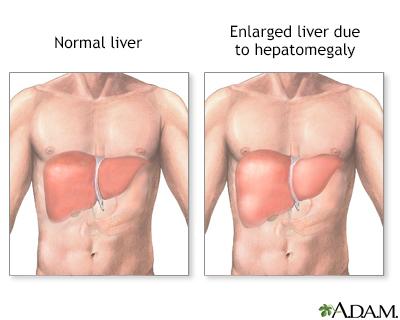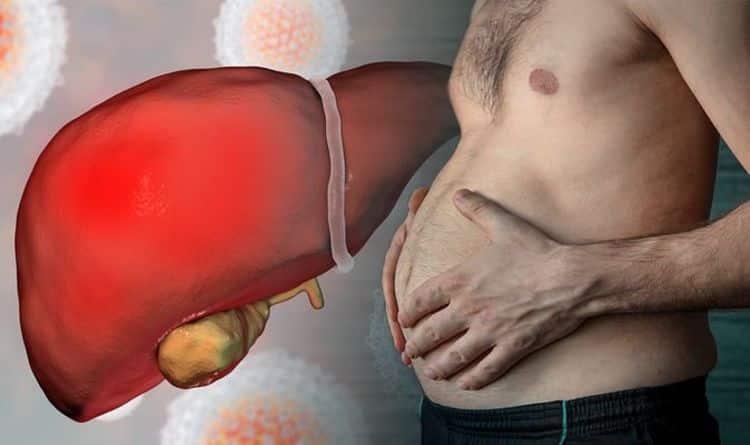
Are there specific diets recommended for someone with an enlarged liver?
Understanding Enlarged Liver: Causes, Symptoms, and Treatment
An enlarged liver, medically known as hepatomegaly, is a common condition that can indicate underlying health issues. This article delves into the causes, symptoms, diagnosis, treatment, and lifestyle changes related to an enlarged liver. Understanding this condition is crucial for maintaining liver health and overall well-being.
What is an Enlarged Liver?
The liver is a vital organ responsible for various functions, including detoxification, protein synthesis, and production of biochemicals necessary for digestion. When the liver becomes larger than its normal size, it is termed as enlarged liver or hepatomegaly. This condition can affect individuals of all ages and may be a sign of several medical conditions.
Causes of Enlarged Liver
An enlarged liver can arise from numerous factors. Some of the most common causes include:
- Alcohol Abuse: Chronic alcohol consumption is a leading cause of liver enlargement.
- Fatty Liver Disease: Non-alcoholic fatty liver disease (NAFLD) and alcoholic fatty liver disease can lead to liver swelling.
- Viral Infections: Hepatitis viruses (A, B, C) can cause inflammation and enlargement of the liver.
- Metabolic Disorders: Conditions like Wilson’s disease or hemochromatosis can lead to liver enlargement.
- Cancers: Liver cancer or metastasis from other cancers can result in hepatomegaly.
- Heart Disease: Congestive heart failure can cause blood to back up in the liver, leading to swelling.
Symptoms of Enlarged Liver
Many individuals may not experience symptoms with an enlarged liver, especially in the early stages. However, when symptoms do occur, they may include:
- Abdominal discomfort or pain
- Fatigue
- Jaundice (yellowing of the skin and eyes)
- Unexplained weight loss
- Swelling in the abdomen
- Dark urine or pale stools
Diagnosis of Enlarged Liver
Diagnosing an enlarged liver typically involves a combination of medical history, physical examination, and diagnostic tests. These may include:
- Physical Examination: A healthcare provider may feel for any abnormal enlargement during a physical exam.
- Imaging Tests: Ultrasound, CT scans, or MRI can help visualize the liver’s size and structure.
- Blood Tests: Liver function tests can assess the overall health of the liver and identify markers of liver disease.
Treatment Options for Enlarged Liver
Treatment for an enlarged liver focuses on addressing the underlying cause. Some common treatment options include:
1. Lifestyle Changes
Adopting a healthy lifestyle can significantly impact liver health:
- Limit alcohol consumption.
- Maintain a balanced diet rich in fruits, vegetables, and whole grains.
- Exercise regularly to maintain a healthy weight.
2. Medications
Depending on the cause, medications may be prescribed:
- Antivirals for viral hepatitis.
- Medications to manage underlying conditions like diabetes or high cholesterol.
3. Surgical Options
In severe cases, surgical intervention may be necessary:
- Liver transplant for end-stage liver disease.
- Removal of tumors if cancer is present.
Benefits of Early Intervention
Recognizing and treating an enlarged liver early can lead to improved health outcomes. Some benefits include:
- Prevention of further liver damage.
- Reduced risk of complications such as liver failure or cirrhosis.
- Enhanced overall well-being and quality of life.
Practical Tips for Managing Liver Health
Here are some practical tips to help maintain liver health:
- Stay hydrated; drink plenty of water.
- Limit intake of fatty and sugary foods.
- Incorporate regular physical activity into your routine.
- Get vaccinated against hepatitis A and B.
- Regularly monitor liver health through check-ups.
Case Studies and Personal Experiences
Many individuals have successfully managed their liver health through a combination of medical treatment and lifestyle changes. For instance:
Case Study 1: John’s Journey
John, a 45-year-old man, was diagnosed with fatty liver disease. After making dietary changes and committing to regular exercise, he managed to reduce his liver size and improve his overall health.
Case Study 2: Maria’s Recovery
Maria, diagnosed with hepatitis C, received antiviral treatment and adopted healthier lifestyle choices. Her liver function tests improved significantly, showcasing the importance of early intervention.
Conclusion
Understanding an enlarged liver is essential for maintaining liver health and overall well-being. By recognizing the symptoms, seeking timely diagnosis, and implementing appropriate treatment options, individuals can manage this condition effectively. Prioritizing liver health through lifestyle modifications can lead to a healthier, happier life. If you suspect you have an enlarged liver or experience any related symptoms, consult with a healthcare professional for personalized advice and treatment plans.
